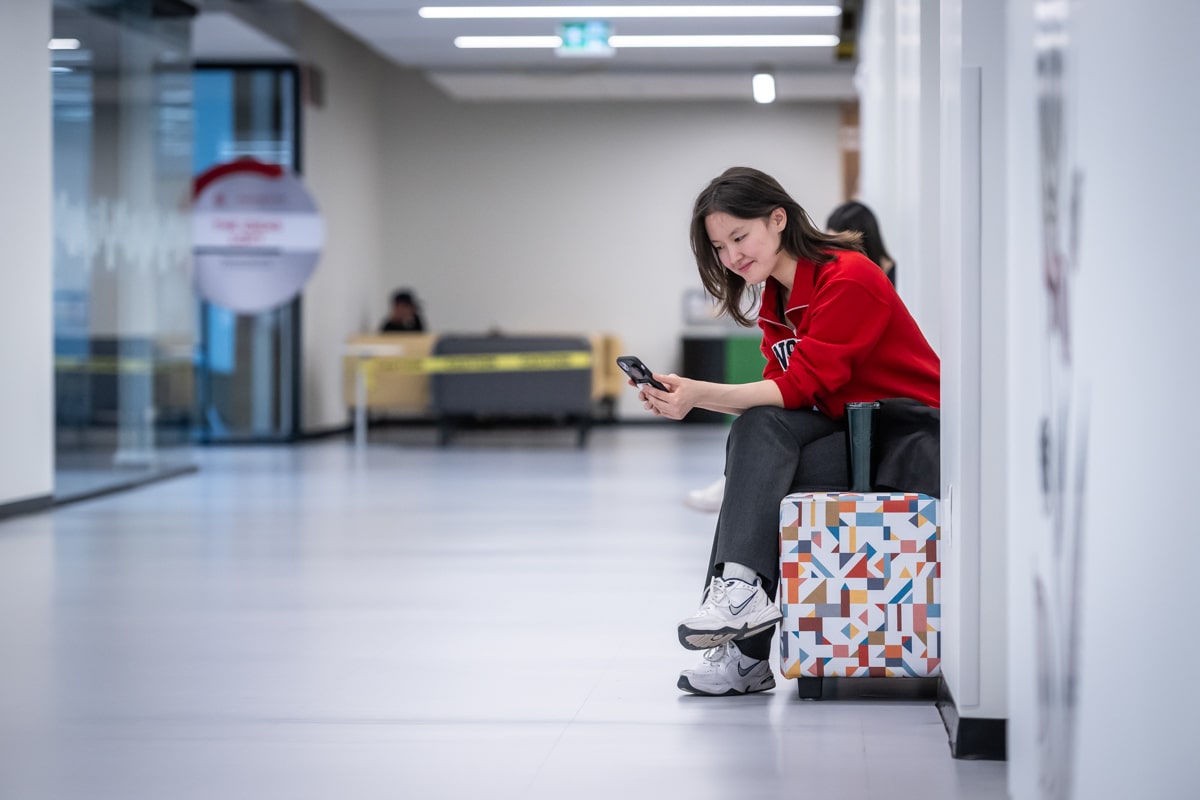
If you’re a post-secondary student, you’ve probably heard the term “educational pathway” or "learning pathway" before. But what is a pathway in education? When colleges and universities talk about pathways, they’re actually talking about learning pathways to help you achieve academic and career success.
At Fanshawe, we define a pathway as different academic routes a student could take to gain recognition for their prior learning. Students can use pathways to move from one diploma program to another, from a diploma into a degree and even gain credits for skills learned through work and life experiences. There are actually many education pathways that exist, no matter where you are in your academic journey. You never need to feel stuck in your current pathway because you always have options.
How do I find the learning pathways available to me?
We can help! Use our Pathways Database tool to find a pathway for you. If you can’t find what you’re looking for, contact our Pathways team.
Types of Pathways
Transfer within your current school
Transferring within your institution is a learning pathway that bridges from one credential to another. For example, maybe you started your academic journey with a diploma and now you want a degree at the same institution. Follow a pathway and get credit for courses that you’ve already taken.
Improve Academic Standing or Get Advanced Standing
Pathways can also be used to improve academic standing or to prepare for more advanced programs. For instance, Fanshawe’s prep programs exist to prepare you for a wide breadth of opportunities, including other Fanshawe programs, external degrees and more. For example, take the Ontario College Certificate Pre-Health Sciences Pathway to Advanced Diplomas and Degrees to prepare for the Collaborative Nursing Degree (and get additional consideration when applying for competitive health career programs).
Transfer from one school to another
You may want to finish your current program by transferring to another institution. This kind of pathway is often supported by articulation agreements that your current institution has with partner institutions worldwide. These agreements allow you to get credit for the courses you've already finished in your current program if you transfer to one of these partner schools. This way, you won't have to repeat coursework. Fanshawe even has partnerships with universities overseas, meaning the ability to study abroad might be closer than you think.
Transfer life and work experience into an educational pathway at a post-secondary institution
There are pathways that can take you from your current job (or from other experience you’ve gained outside of a post-secondary institution) into a college or university program. Examples include academic upgrading, completing a graduate certificate, finishing the education you started or even applying for Prior Learning Assessment and Recognition (PLAR). PLAR allows you to earn credits for the knowledge you’ve gained through life or work experience, giving you a head start (including credits) to earn a credential like a certificate, diploma or degree.
When it comes down to it, educational pathways are the options you have for courses or programs you can take in a sequence to help you reach your goals. Pathways can take you from earning your grade 12 equivalency, to an advanced, diploma, degree and beyond. Enter whenever and wherever you are in your academic or career journey and finish when you’ve reached your personal goals or gained the skills needed for your dream career.
What kind of students use pathways?
All kinds of students can benefit from pathways! Even those that aren’t currently students at a post-secondary institution can take advantage of the benefits pathways have to offer.
Considering if a pathway might be for you? Follow our step-by-step guide for charting your pathway!
Academic Upgraders
Some students may find that their educational background is insufficient to get them into their desired post-secondary program. If you’re looking to get into a difficult college or university degree (read more about college vs. university degrees), a specialized program with specific pre-requisites or highly competitive programs, you can take a learning pathway to gain the pre-requisites or get advanced academic standing to help you get into your desired program.
Workers Looking to Upskill
Whether you have acquired your knowledge and skills throughout your career or you’ve previously earned post-secondary credentials, you can put your experience to work for you! A pathway in education means you can receive credit for courses you’ve already completed or you can use PLAR (Prior Learning Assessment and Recognition) to get recognition for the skills you’ve gained throughout your career. You can actually receive credit for up to 75% of a college program with PLAR depending on how your learning matches the course requirements.
Students With Changing Goals
Some students might find themselves mid-way through a college program, having completed some courses, and realizing their needs and goals have changed. That’s where learning pathways come in.
If you need to temporarily leave school to focus on other priorities, change programs to reach your new goals or move institutions to be closer to family, educational pathways can help. Transfer agreements to institutions worldwide can help you move from one location to another and complete your studies, or you transfer from one program into another within your current institution, including advancing from a diploma, to an advanced diploma to a degree.









